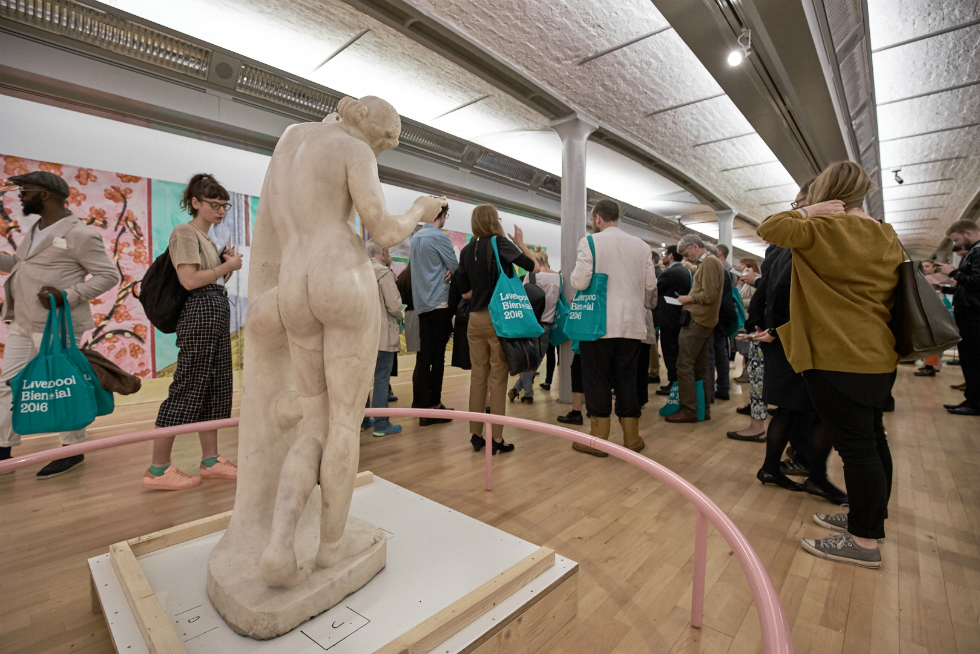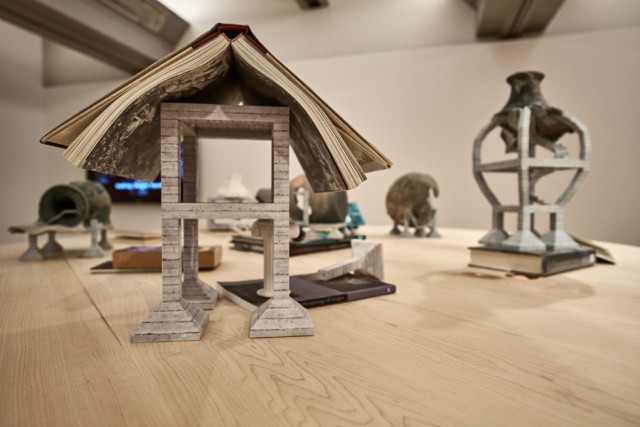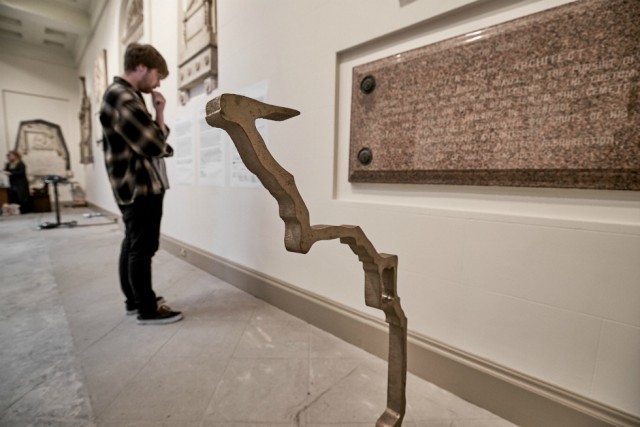“Exhilaratingly, intentionally naughty”: Liverpool Biennial’s Ancient Greece Episode — Reviewed

Split into time travelling “episodes”, this year Liverpool Biennial art festival is tackling a series of big themes. Transported to Ancient Greece, Jack Roe finds a dizzying and compelling journey through three millennia of human endeavour…
Word has probably reached you that the expanse of the city has been taken over by time travelling, artistic practitioners. Not content to question the particulars and boundaries of craft and medium, the artists, curators and organisers of the UK’s largest independent art festival have begun to toy with very fabric of our existence.
Do not adjust your television set: the picture is correct. If art has the power to educate, to entertain and to heal, then why not distort our temporal reality? In that spirit, Liverpool Biennial has invited us to discuss flashbacks, or what the future may look like, via six different themes or “episodes”: Ancient Greece, Chinatown, Children, Monuments From The Future, Flashback and Software. But what impact would Ancient Greece have had on the business of culture in contemporary Britain?
For answers to the question of relevance, one need only look at the buildings that act as touchstones for Liverpool’s internal and extremely personal grand narrative. What has come to be known as neoclassical architecture is generally accepted to have originated in the Venice of the 16th century. A few moments of your time may be well spent wondering the paths that could have caused such stylistic endeavours to take root in the North West of England, but sufficient is the knowledge that St George’s Hall, along with much of the historically affluent waterfront district, was designed and built with a firm nod to the past. And in amongst the history lesson, emerges art.

Tate Liverpool (above) is no stranger to work of significant gravitas, and yet even here, in such familiar and subtly refined surroundings, the proliferation of Ancient Grecian marble currently to be found on the first floor is impressive in its impact. It is not necessary to spend too much time amongst art, and indeed everything else, to realise that there is a peculiar correlation between age and significance. If something can claim some small part of the shock of the new as its own, then its aura is assured and the same with surviving relics of the distant past, a dichotomy that reveals something curious and intangible about the human attention span.
To that end, the boundless contrasts to be discovered in Tate’s offering are, to dispense briefly with the language of the craft, ruddy great fun. From the juxtaposition of the curators’ lurid pink framing and the sombre off-white of marble, to the boldness in littering (literally, rubbish on the floor) in an art gallery, as Jason Dodge has done with his new installation What the Living Do. Dodge’s cigarette ends, sweet wrappers, leaves and receipts makes comment in regards to the way humans interact with the landscape, and presenting such in close proximity to artefacts that pre-date modern Europe, the whole thing feels exhilaratingly, intentionally naughty.

A note: Dodge’s work, and the work of other Biennial artists, pop up in multiple venues; even crossing episodes. Much like the time travelling effects outlined in pop culture, there are crossed streams of timelines to be found, including multiple versions of individuals and objects. It’s advisable to keep hold of the official guide so as not to lose your way.
Situated in the grounds of the Anglican Cathedral, The Oratory (above) is one of the more explicit examples of Grecian architecture in the city and, as such, is arguably the most suitable of the three locations in which this episode has found a home. Lawrence Abu Hamdan’s Rubber Coated Steel takes an unflinching look at the extreme violence of which we are capable, and is the standout of a much smaller and more focused collection.
At George’s Dock Ventilation Tower Plaza, Betty Woodman‘s interpretation and channelling of practices and aesthetics spanning human history – both geographically and culturally – is surprisingly cohesive, suggesting an attempt and indeed a success on behalf of the artist in finding some common thread between Ancient Egypt and the Italian Baroque. As it often is with artwork that is housed beyond the confines of the white cube – at the mercy of the elements and with no attempt at exclusivity with regards to who may interact with it – Woodman’s bronze fountain cannot help but to speak to the way in which we have engaged with our shared human culture in the past, and may continue to do so in the future.
All in all, Liverpool Biennial’s Ancient Greece episode is a dizzying and compelling journey through three millennia of human endeavour, and one that feels much more relevant than may be assumed.
Jack Roe
All images courtesy Rob Battersby, with thanks
See Liverpool Biennial 9 July-16 October 2016 — FREE
Download or pick up in print now our Biennial Fringe edition of Culture Diary! Your indispensable pocket guide to a wide range of alternative events across Liverpool, happening at the same time as Liverpool Biennial 2016 festival of contemporary art (Jul-Oct 2016)
Read Maja Lorkowska’s “Nervously looking forward”: Liverpool Biennial’s Flashback Episode — Reviewed
Read Katrina Houghton’s “Struggling to connect the dots”: Liverpool Biennial’s Chinatown Episode — Reviewed





